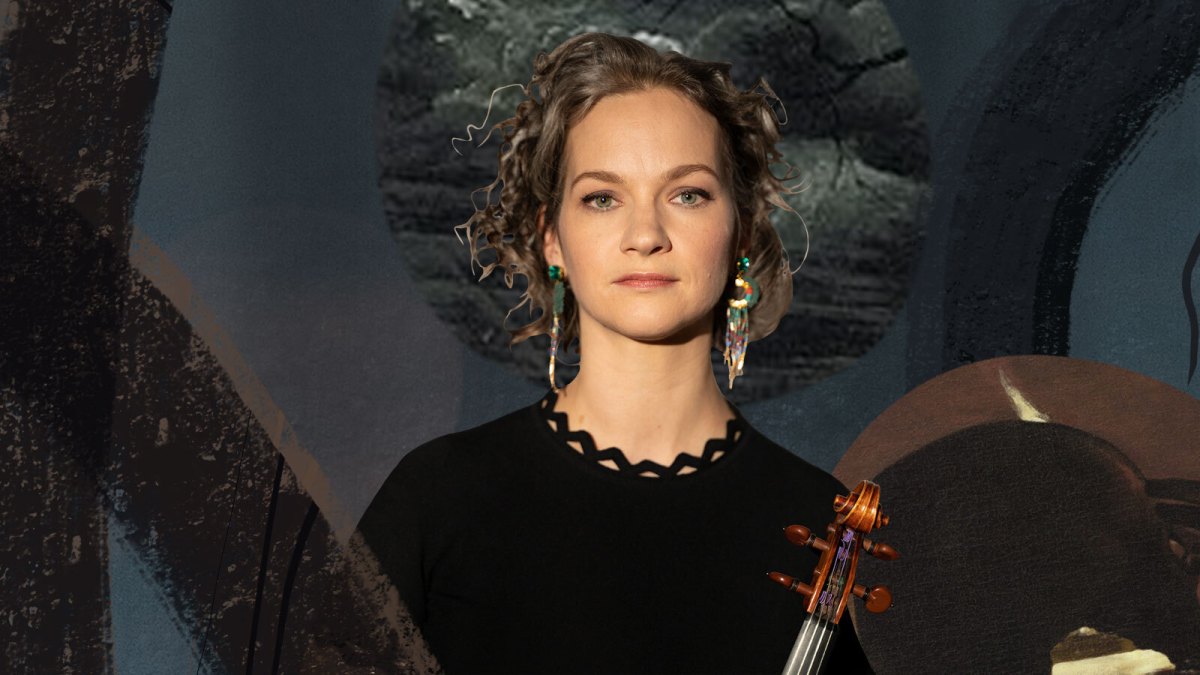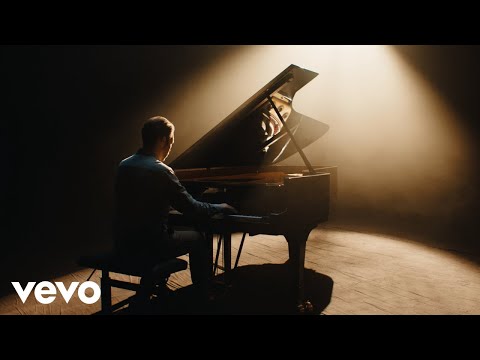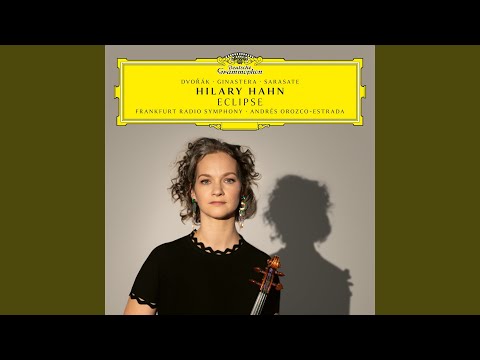- Leif Ove Andsnes: “Dvořák: ‘Poetic Tone Pictures’” (Sony Classical)
- A Far Cry, Shara Nova: “The Blue Hour” (Nonesuch/New Amsterdam Records)
- Hilary Hahn, Frankfurt Radio Symphony Orchestra, Andrés Orozco-Estrada: “Eclipse” (Deutsche Grammophon)
When you think about it, it’s a wonder that Dvořák didn’t emerge as a hero of the pandemic. Perhaps we’re too conditioned to think of him as the composer of the “Slavonic Dances” or that one opera that has demonstrated you can have a Black woman play the Little Mermaid and the world won’t implode. But the composer’s larger body of work, with its balance of visceral introspection and vast natural landscapes, was ideally suited to lockdown. He was, as Jakub Hrůša points out, driven by both spiritual belief and a love of nature. And whose lockdown didn’t vacillate between those points at least a little bit?
As his career progressed and his finances found even footing, Dvořák made good on one dream: buying a country house roughly 40 miles southwest of Prague, where he felt “cut off from the world” and able to “enjoy the beauties of God’s nature.” It was there, in self-imposed isolation, that he wrote his “Poetic Tone Pictures”: a series of 13 piano miniatures, each one a meditation on their title that goes beyond narrative. “Here I am a poet as well as a musician,” Dvořák said of the work to his friend, the music critic (and fellow train enthusiast) Emanuel Chvála. Each portrait is imbued with a hue of ardent lyricism and consideration. “Sorrowful Reverie” is a pain-is-pleasure kind of sorrow; the kind that Goethe or Rimbaud would happily wallow in while stretched across a divan and watching rain pelt the window. Each miniature also works in conversation with the others; as “Reverie” moves into “Furiant,” it feels like one fluid movement—a moment of languid heartbreak turning into blind rage.
“Clearly he was thinking of them as a cycle,” Leif Ove Andsnes says in the liner notes to his new recording of the “Poetic Tone Pictures.” It’s an album we can thank lockdown for: With his concert schedule wiped clean in 2020, Andsnes (who had played some of the pictures as standalone works throughout his career) took the opportunity to settle down with the full score. Dvořák’s own trial-and-error approach to composition, especially when it came to the piano—an instrument he didn’t own until his 40s—offers several pandemics’ worth of time for exploration and development in his solo works for the instrument. The fact that there are so few complete recordings of the “Poetic Tone Pictures” also means there is plenty to glean from the score.
It’s fresh snow that Andsnes deftly trods, winding and weaving his footsteps into an intricate pattern that arranges each of the 13 pictures to foster that sense of conversation and engagement. Andsnes’s technical command of a score has never been a matter for debate. It’s one of the reasons that he’s able to prolifically release albums (which, since the beginning of the pandemic, have included a Grieg recital with Lise Davidsen, two installments of a multi-volume Mozart odyssey with the Mahler Chamber Orchestra, and guest spots on both an all-star Bent Sørensen collection and a tribute to the Norwegian composer Ketil Hvoslef). But I doubt he would have reached the same levels of depth and connection had he been able to record this Dvořák without the enforced slowdown of 2020. Here, the interiorities converge.
The latest from VAN, delivered straight to your inbox
There’s a line in a poem by Carolyn Forché that Dvořák probably would have appreciated, maybe even set himself: “La terre nous aimait un peu je me souviens.” (The earth loved us a little, I remember.) Forché herself cribbed the phrase from French poet and Resistance fighter René Char, but weaves it into a fresh context in her prelude to “On Earth,” a restless and relentless catalog of images and memories that flow through the mind of a woman as she crosses the threshold from life into death. The main event of the poem is over 45 pages of these moments, itemized alphabetically. When the work was first published, in 2003’s Blue Hour, Forché lamented that “the acceleration of the velocity of our experience has eroded our capacity to sustain contemplation.” And while the ensemble A Far Cry commissioned the song cycle “The Blue Hour” in 2015, its just-released recording feels aptly timed in an era of contemplation that’s both worse and better than what Forché saw nearly 20 years ago.
An ambitious text requires an ambitious composer. Or, in this case, five composers. When A Far Cry began putting “The Blue Hour” together, it reached out to Rachel Grimes, Angélica Negrón, Shara Nova, Caroline Shaw, and Sarah Kirkland Snider to work collaboratively on picking lines from Forché’s cabinet of contemplations and setting them, passing the text between one another like a serving platter circulated around a dinner table. Nova also serves as the song cycle’s soloist. This architecture lends to “The Blue Hour”’s compulsive relistenability, new lines emerging as significant with each turn. I want to revisit this album like I revisit certain books every few years or so, using it as a sort of psychological yardstick or rorschach test to see what stands out. It’s both a means and manifestation of contemplation.
Across 75 minutes broken down into 40 sections, Forché’s throughline moves between the composers with the dexterity and fluency of a Chekhov play. Each composer’s signature style is preserved as character traits, essential to the narrative and dramatic arc. Forché’s lines become personal, self-aware: Négron begins the index early on in the “A”s—“a black map of clouds on a lake/a blackened book-leaf, straw and implements”—and it seems like a sly wink that this movement would include the line “a broken equation, a partita” shortly before the baton is passed to Shaw (with a haunting interlude from Grimes in between). Shaw, whose penchant for finding music in the spoken word makes her especially well-suited to this source material, ends her own first setting with a sigh of relief on the word “Angelica,” part of a line that Snider then finishes out as if finishing a friend’s thought.
The nonlinear order of “The Blue Hour” reminds me of Hilary Hahn’s discography which has been at its best when pairing one standard work of violin repertoire with something stylistically opposite and slightly less Top-Ten—2001’s Brahms and Stravinsky, or the following year’s Mendelssohn and Shostakovich, for example. Like any good comparatist, Hahn used these pairings as a way of exploring both works in reframed reference, making meaning out of what would either seem random or shallowly connected at best.
Ironically, Hahn had announced in September of 2019 that she would take a yearlong sabbatical from performing, returning to the concert stage in the 2020-21 season. At the time she wrote, somewhat prophetically, that “the best way for me to find out what this sabbatical is meant to be is to start it and see where it wants to take me.” Insert your reaction GIF of choice here.
Like Andsnes, Hahn turned to Dvořák, who was 37 when he wrote his Violin Concerto. It’s a work that wrestles with vision over tradition, to the point where its original muse and dedicatee, Joseph Joachim, objected to Dvořák’s break with the classical form. The first movement flows without pause into the second, a dinner table discussion that moves uninterrupted into the living room for coffee and continues, unnoticed, long past midnight. At times, violin lines sound like improvised cadenzas rather than codified phrases, trailing off mid-sentence before quickly alighting on something else. A Czech composer who struggled between nationalism and cosmopolitanism, Dvořák seems to be figuring himself out in this work.
So, too, does Hahn who, at 42, is acutely aware of her career and its phases. “We’re in the middle of our careers,” she said of herself and conductor for this album, Andrés Orozco-Estrada. “We’ve had time to define who we are as musicians, but we’re still on a big path. It’s the middle landing point, but it’s a really important landing point because it’s where you start to reassess and define for yourself where you’ve come from and where you’ve arrived.” Giving space to uncertainty and ambiguity leads to a compelling navigation through Dvořák’s dialectical concerto. It’s also key for Ginastera, a composer who—much like Dvořák—found his artistic identity entwined with both his spirituality and national identity (though he eventually moved away from, rather than towards, the latter impulse).
Ginastera’s Violin Concerto breaks down in order to rebuild, with its first movement broken up into six rigorous studies. Listen to Hahn play nothing but thirds for one nonstop minute, and you start to question reality. That, too, is kind of the point. As much as all things can be—as Jenny Holzer put it—delicately interconnected, that connection can just as easily be fractured versus fluid. It makes the landing points that much more crucial. ¶
Subscribers keep VAN running!
VAN is proud to be an independent classical music magazine thanks to our subscribers. For just over 10 cents a day, you can enjoy unlimited access to over 875 articles in our archives—and get new ones delivered straight to your inbox each week.
Not ready to commit to a full year?
You can test-drive VAN for one month for the price of a coffee.





